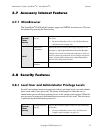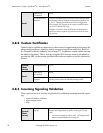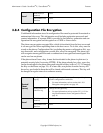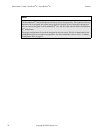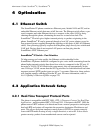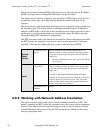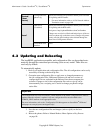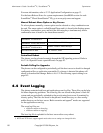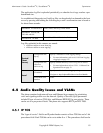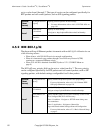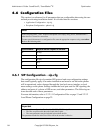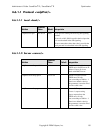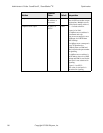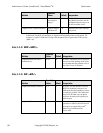
Administrator’s Guide - SoundPoint
®
IP / SoundStation
®
IP Optimization
Copyright © 2006 Polycom, Inc. 81
The application log file is uploaded periodically or when the local copy reaches a pre-
determined size.
As an additional diagnostic tool, both log files can be uploaded on demand to the boot
server by pressing and holding the following keys until a confirmation tone is heard or
for about three seconds:
Log files uploaded in this manner are named:
• <Ethernet address>-now-boot.log
• <Ethernet address>-now-app.log
4.5 Audio Quality Issues and VLANs
The phone contains both network layer and Ethernet layer support for prioritizing
voice and signaling traffic over the network. Quality of Service (QoS) parameters
include IP type-of-service (TOS) bits, and Ethernet IEEE 802.1p user priority. These
can be set on a per-protocol basis. The phone also supports RTCP per RFC 1889.
4.5.1 IP TOS
The “type of service” field in an IP packet header consists of four TOS bits and a 3-bit
precedence field. Each TOS bit can be set to either 0 or 1. The precedence field can be
SoundPoint
®
IP 300 and 301:
Line1, Line2, Arrow Up, Arrow Down
SoundPoint
®
IP 430, 500,
502, 600, and 601:
The four arrow keys
SoundStation
®
IP 4000:
Menu, Exit, Off-hook/Hands-free, Redial
Central
(boot
server)
Configuration file:
sip.cfg
Specify a multitude of event logging settings.
• For more information, refer to 4.6.1.19 Event Logging
<logging/> on page 137.
Configuration file:
<Ethernet
address>.cfg
Specify different directory to use for log files if desired.
• For more information, refer to 2.2.2.1.1.1 Master Con-
figuration Files on page 13.
Local
Web Server
(if enabled)
Specify a multitude of event logging settings.
Navigate to: http://<phoneIPAddress>/coreConf.htm#lo
Local Phone User
Interface
None.



